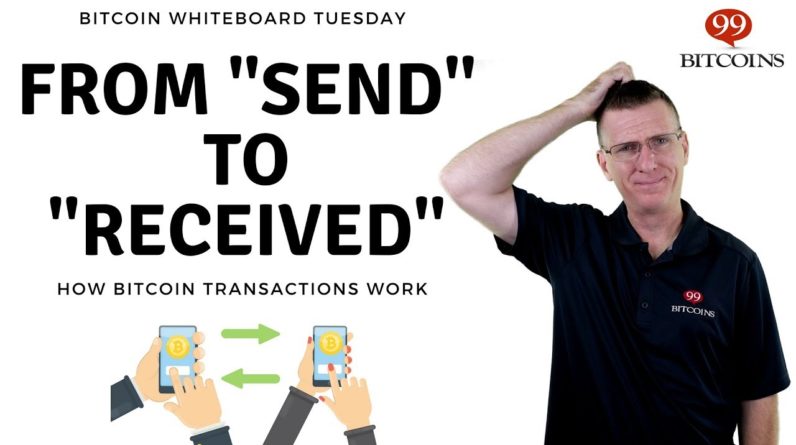
So, what is blockchain, really? We may gawk at companies
that have almost no technology in their processes, simply put blockchain in
their names and suddenly the market goes: Wooooow! Blockchain! The
valuation starts to climb, then skyrockets. 10%, 15%, 30% gains in a single
day! Everybody's euphoric! And then…pooof! They just crash again when people realize
nothing makes sense anymore. So let's find out how a blockchain truly works
in under 8 minutes, starting now. Blockchain is a set of technologies that
were already used for quite some time, but linked in new creative ways.
Another name for blockchain is DLT
(Distributed Ledger Technology) Which illustrates well what blockchain actually
does: store data in a decentralized fashion. The first application of this tech was bitcoin,
shortly after the world economic crisis in 2009. First, let's begin with the technology goal: we
want to create a system that a lot of people who don't know each other can use to transact value,
without needing a third party managing everything. For that, we'll have to overcome and
solve some issues along the way. The first thing we've got to define is:
how do we identify people. Being a system that nobody controls, the ID process has
to be done in a way that you can prove you're you, without an international
registration with all of your data. For such, we'll have to retrieve the
first piece of crucial technology, the concept of public and private keys. A public key is a public identifier that can be
created, equivalent to an email for instance. If somebody needs to send you some money, they utilize this information
to know where to transfer to. The catch is: how to use a public system
WITHOUT needing to register a password.
That's where the private key comes in. The private key is a private identifier,
equivalent to a digital signature, used to create and manage (in
some ways) the public key. In more technical terms, (a way to do) the private key is
the product of two MASSIVE prime numbers, and the public key is the
mathematical result of that. Hence, in practice, you can safely broadcast this
result (the public key), because it's insanely difficult to know which prime numbers were
used in the math calculation (the private key).
This private public keys technology is
already being used at many companies, softwares and protocols. Like your
internet browser or even whatsapp. To make any transaction in the blockchain, a private key is needed for
signing and validating it. Usually, private keys are encrypted into a sequence of words or computer file,
to facilitate its day-to-day usage. Okay, with this we have a system to create the
equivalent of accounts, and we can identify people and transfer value. Still,
there's a second problem around: how do we know that the values
transferred are actually real? To make this verification process, we need to
create a unit of value. xCoin, for instance. For now, I won't focus on either
price or the emission of these xCoins, this will be the subject of a future video. And beyond creating a unit of value, we
need some way to track transactions. In a traditional banking business, it's really easy:
we've got an enterprise controlling everything.
In which customers names and
other data are easily exposed, but the exact amounts moved,
and account balance are hidden. On the blockchain, this logic is subverted. Both
the public key and transacted amounts are 100% transparent: not only to the ones involved in the
transaction, but to every network participant. You may have already heard that everyone
is anonymous in the blockchain, but that's just half of the truth. In fact, the system is
pseudonymous: from the moment anyone notates or associates one's public key to an
entity, you CAN'T erase that history. Therefore, if we can visualize
every network transaction, we can easily verify the xCoin's origin we're
receiving, if it's the real deal or not, if it was already spent elsewhere, or if it ever came
into contact with a known criminal organization. Moving on to the third problem:
who stores all this history? That one is quite simple, all of the network
participants have an updated copy of the complete history of transactions.

That way, it's
not necessary to trust third parties to do it. Which brings us to the fourth problem: how to
decide who, in practice, writes the transactions? Now that's part of the consensus algorithm
that the blockchain uses. There are quite some ways to solve this issue, each with its pros
and cons. The first solution ever created to this problem was the proof-of-work
algorithm with bitcoin in 2009. I'm gonna make a video just about that and
I'll leave it in here in the description below. Long story short, in the proof-of-work algorithm, computers (called miners) compete with
each other to solve a mathematical problem. The first one to find a solution to it gains
the right to write and publish transactions, alongside its mathematical proof. Immediately after that, all miners start solving a
new mathematical problem, restarting the process. And yet, a great problem still remains: how do we
guarantee correctness in the transaction order? Or that no miner tries to tamper with the blockchain
history? For that we need to do three things: (1) Group transactions into blocks,
to optimize the whole process. (2) Label these transaction
blocks that are being produced.
(3) And always write the current block ID, and
the previous block ID, in each transaction block. Thus, creating a chain of blocks, which
gives us the original name: a blockchain. In other words, if someone tries
to tamper with an old block, they won't need to change just that specific
block, but other blocks after that as well. This process will be clearer in the specific video I'll do about
the proof-of-work consensus algorithm. Finally, we have two more problems to
solve: how to incentivize that there will be miners to write the blocks? And how to avoid
malicious entities from spamming the network? For that, we add transaction
fees to every transaction. For every generated block, the miner who
is writing it will gain a reward in xCoins.
And in the case anyone tries to spam the network, they'll pay an exorbitant amount
of transaction fees first. Now, let's summarize the whole process:
we've got people wanting to use the network, sending transactions to all the miners. Then,
we have the miners competing to see who solves the mathematical problem first, so they have the
right to write the next block of transactions. In which, the block is composed of: the ID
from the previous block, the current block ID, all the public addresses and transaction
values, alongside the transaction fees. The reward amount to the miner, and lastly the
hash used as the mathematical proof of the block.
From here, the whole process repeats
in a cycle for future blocks. Aaaand that's it, folks! These are the blockchain
fundamentals to any cryptocurrency project of the market. Some projects have slightly different
solutions, but the whole knowledge foundation came from these first solutions that
bitcoin brought in '08 and '09. If you have enjoyed the video, please press
the like button and share it. Comment below if you have any suggestions, or nasty things
in general. You can support our project by delegating to [AIDA], our Cardano Stake Pool,
and earn exclusive really cool artsy NFTs. Learn more via the link in
the description. See ya!.




